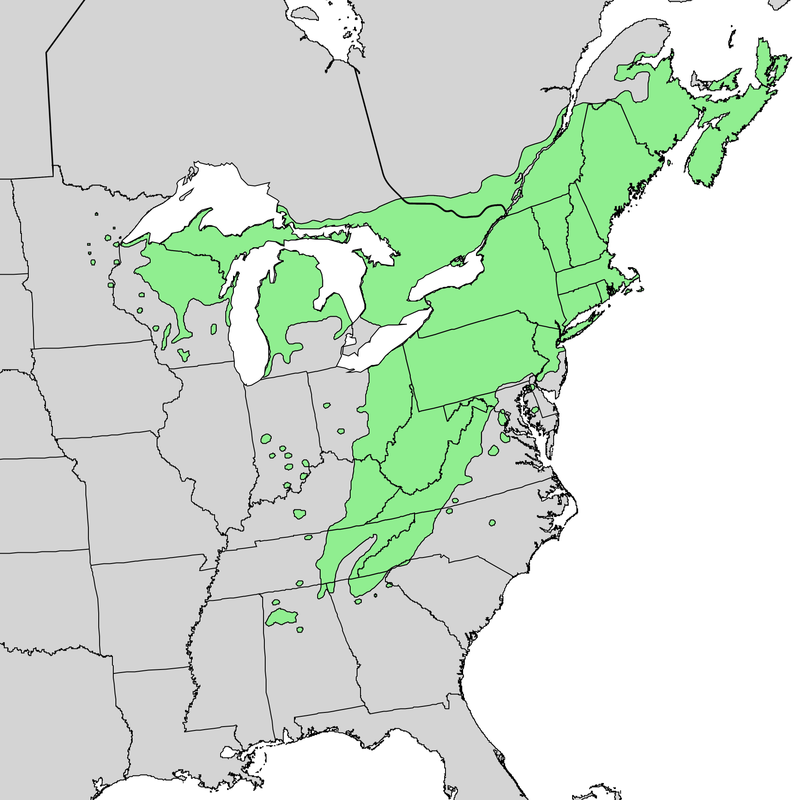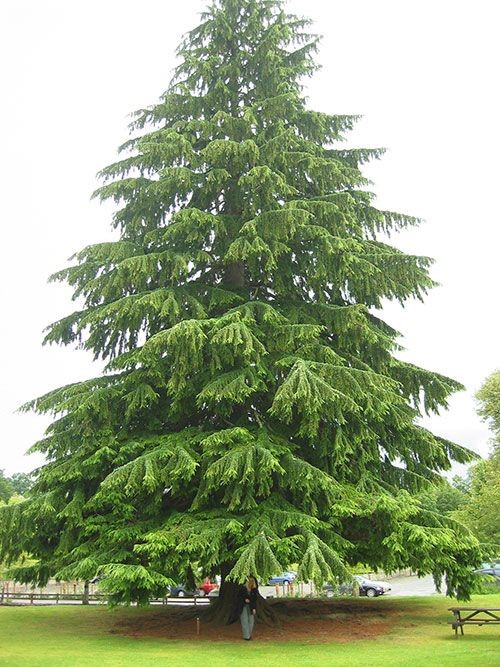Eastern Hemlock (Tsuga canadensis)
The Eastern Hemlock is native to the northeastern United States with scattered native populations in Minnesota.

The Eastern Hemlock is a coniferous tree meaning it produces cones and has leaves that resemble scales or needles. It has a medium growth rate and grows about 1-2 feet each year, but the time it takes to reach maturity can be 250-300 years. They can live for over 900 years and are the most shade tolerant tree species, so they can grow in the understory of forests very effectively. Even though they are incredibly long lived, their root systems are usually quite shallow and are susceptible to being blow over in the wind or uprooted in a storm. They are popular trees to plant in urban areas and are often used for landscape purposes.

The needles of the Eastern Hemlock are short (about 1-2 centimeter long) and flat. Th needles are dark green and come out on two sides of the thin twigs. Looking at the underside of the needles, you will see more of a blueish white and this is due to the stomatal bands (the pores the tree uses to absorb CO2) come together as lines.
This is a monoecious tree, so it contains both male catkins and female cones on one tree. The male catkins are small yellow bundles that form on the twigs between needles, and the female cones are one the smaller side and start out green and reach a woody brown color when they reach maturity.
The Eastern Hemlock is prized for its tannin rich bark that can be extracted and used to tan leather. In the Ojibway tribe the Eastern Hemlock is known as the “gagagi’ wîc” or raven tree due to ravens frequenting its branched. The leaves are used in medicinal tea not for their medicinal properties, but their ability to mask other flavors. It is said to taste like wild carrot (sweet and earthy). The bark could be applied to cuts and would in order to stop or slow the bleeding. We now know the bark contains high levels of tannin, so it is very astringent and would help the wound close.
